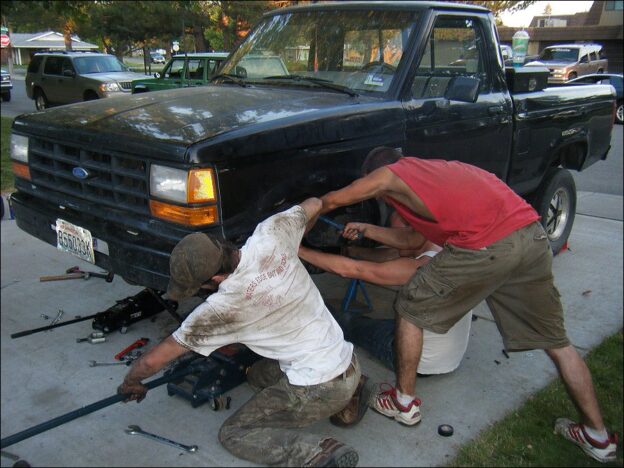
Monthly Archives: January 2023
Restoring a classic car is similar to other major life undertakings such as home remodeling or a big vacation – no matter how much you plan in advance, things can change without notice. The Motor Bookstore is here with tips and advice to make sure your bank account, time, and sanity stay on budget during your next classic car restoration project.
Keep a realistic schedule
A full frame-off classic car restoration can take up 1,500 hours – at least a year of part-time work. Know this going in, and plan your work schedule so you’re never feeling pressured to hit a deadline, as rushing can lead to costly mistakes.
Know your financial budget in advance
Having a target number will help guide every subsequent decision. The standard budget-setting method is to estimate your expenses if things go perfectly, then add at least 30 percent for unexpected costs.
Record your expenses
Keep all receipts for parts and labor, along with a tally of your running total. This tracking acts as a form of self-restraint against impulse buys.
Make a good initial car purchase
Carefully weigh the upfront price against how much various repairs will cost. Avoid cars with rust and missing trim, as these things are the most expensive to fix. Learn as much as possible before buying, and don’t rush your decision.
Do your own dirty work
Read books and manuals, watch DIY videos, talk to friends, and whatever else it takes so you can learn to do as much as possible. Even taking the car apart and cleaning each component on your own can save a lot of money versus what professional labor would cost.
Wait to order
Don’t buy any parts until you’ve fully disassembled the vehicle and cataloged what you need. From there, talk to salvage centers and car collector groups to see what’s available at discounted rates. Another little-known trick is to send a list of parts to various suppliers, and tell them the full order will go to the lowest bidder.
Relax
No matter how carefully you plan, there’ll be hiccups along the way. When they happen, take a deep breath, and remember: this is meant to be fun.
Want to learn more about car restoration? Check out our blogs about how to get your restoration started and what to do if you’re new to car restoration.
As any car owner quickly learns, car repairs are a fact of life. But The Motor Bookstore doesn’t want you spending a small fortune just to keep your car on the road. That’s why we’ve compiled five ways to save serious money on car repairs the next time you need work done.
1. Do as much of your own work as possible
As long as you have a good vehicle manual and a space to work in, you can learn to do a lot of basic maintenance and repairs. Changing your own oil, filters, tires, fluids, headlights and brakes will save you hundreds of dollars in labor costs while reducing the chances of major failures in the future.
2. Find good repair shops and mechanics
Be selective about who you bring your car to for work. Read reviews, talk to friends, or even visit a shop to see how things work there. Good shops should be ASE certified, clean, have good parts and labor guarantees, and get customers in and out quickly. Getting good work done now will save money later on.
3. Shop around
Even if you’ve found a repair shop you like, feel free to get a second opinion, especially if something seems suspicious. Get estimates that are separated by parts and labor so you can compare prices elsewhere. You can often get big discounts on parts online and also find an estimate of what a repair should cost.
4. Take advantage of warranties
Paying a little more for an extended or lifetime warranty now can pay big dividends if you have to use it. For example, alignment warranties can save you a bundle in the long run, especially if you live an area with heavy traffic or rough roads.
5. Review your bill before paying
Don’t let a repair shop sneak one by you. Make sure you haven’t been double-billed for parts or labor, that the total isn’t way larger than the estimate, and that unneeded repairs aren’t listed. Asking for your old parts back before they begin is a great way to keep things above board.
Looking for more ways to save serious money on car repairs? Check out our blogs on rebuilding an engine on a budget and DIY farm tractor repairs.

 Shop Store
Shop Store













